Intel's E7205: Granite Bay Hits the Streets
by Evan Lieb on November 18, 2002 9:56 AM EST- Posted in
- Motherboards
ASUS P4G8X Deluxe: BIOS and Overclocking
The P4G8X utilizes Phoenix Technology's Award BIOS, which seems to be the most popular BIOS for power users these days.
BIOS hardware monitoring is powered by ASUS's ASB100-A Bach chip. The Hardware Monitor section includes some fairly normal readings and information in general.
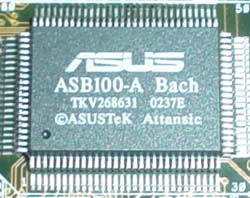
Here you'll find readings on motherboard temperature, CPU temperature, power temperature, fan speeds (CPU, power, and chassis), Vcore, PSU readings (all rails), and an option for enabling ASUS's Q-fan technology. Q-fan is a nice little BIOS option to have, as it regulates your CPU's fan speed based on how taxed your system is at any given moment. CPU temp readings were right where we expected them to be, between 39C and 41C.
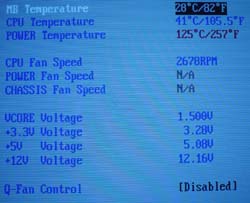
Normally called the Advanced Chipset Features section, the Chip Configuration section included some fairly nice DRAM tweaking as well as other such options.
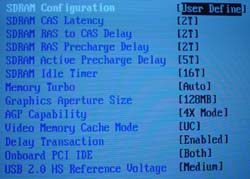
In Chip Configuration, it's possible to adjust DRAM timing mode, CAS Latency, Precharge to Active, Active to Precharge, Active to CMD, and Idle Timer (which doesn't really boost performance at all) among other minor options. There are no Bank Interleave or Command Rate adjustments available, but that's normal for Intel-chipset based motherboards these days. All in all, the Chip Configuration section lives up to the tweaker's needs for the most part.
With Intel's E7205 chipset, the highest memory speed possible is 266MHz (dual channel operated) if your FSB is operating at stock speed (133MHz). Since there are no other divider options available in the BIOS or via onboard jumpers or switches, the only way you can increase your memory speed is by increasing your FSB. If you raise the FSB of your processor to 166MHz (666MHz effective FSB), assuming you have a good enough processor, you can run your memory at DDR333 (dual channel). However, since dual DDR266 already maxes out the bandwidth that 533MHz FSB Pentium 4 processors can handle, there's no need to overclock unless, of course, you're an overclocker.
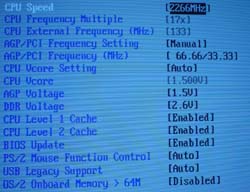
The P4G8X BIOS does include some fairly good voltage tweaking options. In 0.1V increments, you can adjust VDIMM up to 2.7V, which is adequate for most users, considering that overvolting memory doesn't usually yield a significantly better overclock. VAGP is also adjustable in 0.1V increments; as high as 1.7V.
ASUS goes all out with the Vcore options, allowing as high as 1.975V in 0.025V increments. 1.975V should be plenty for most people, as running any modern day Pentium 4 CPU at 1.975V will significantly reduce the lifespan of the CPU. For once, ASUS produces a board that doesn't overvolt, since Vcore (as read through the Hardware Monitor) consistently reads a dead-on 1.5V.
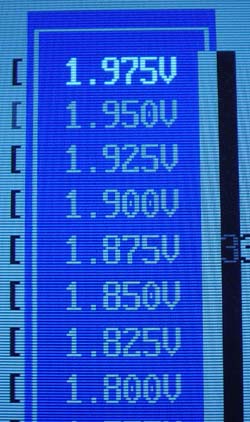
Like every other 845-based motherboard we've tested in the past, the ASUS P4G8X comes with an independent AGP/PCI lock running at 66.67MHz/33.33MHz, and adjustable all the way up to 104.46MHz/52.63MHz. This is a vital feature to have for overclockers, as running your AGP or PCI cards too far out of spec can damage those parts. For non-overclockers, it's still a nice BIOS option to have.
Overclocking the ASUS P4G8X Deluxe was a cinch. The following table lists the components we used for overclocking the FSB:
|
Front Side Bus Overclocking Testbed |
|
|
Processor:
|
Pentium
4 2.26GHz
|
|
CPU
Vcore:
|
1.5V
(actual)
|
|
Cooling:
|
Intel
Retail HSF & Thermal Pad
|
|
Power
Supply:
|
Enermax
300W
|
This is quite a conservative and cheap overclocking setup, but every since its inception P4 Northwood processors have continually been able to outperform AMD's Thoroughbred processors overclocking-wise, making us more impressed by the day with Intel's 0.13-micron process. That said, we were easily able to hit 160MHz FSB, or just over 2.70GHz core clock. This is certainly not out of the ordinary for an Intel chipset based motherboard.
We weren't able to conduct any memory overclocking tests due to the fact that this motherboard only contains a 1:1 divider. However, have no fear, ASUS is coming out with a motherboard based on SiS' 655 chipset, which supports dual channel DDR333. It'll be interesting to see how much performance gain there is with dual channel memory running at 400MHz and beyond on SiS 655 motherboards.










2 Comments
View All Comments
hrumsey - Friday, January 7, 2005 - link
Regarding previous comment:And I told this thing to show e-mail address. hrumsey@charter.net if anyone has questions.
It also removed paragraph indents that would make the above post a bit more readable- apologies.
And a clarification: The ZCR card could be seen to be flashed only because a jumper change is needed to put them in flash mode. In normal mode, the Thunder K8S Pro S2882 BIOS was squashing the Adaptec 2010S / 2015S BIOS.
Damn, I hope Google indexes that comment well.
Speaking of which, for you-know-who:
Tyan Thunder K8S Pro Adaptec 2010S 2015S ZCR RAID BIOS problem incompatibility bug hang failure download flash PCI-X
Tyan 2882 K8S Pro Thunder ZCR Adaptec 2015S 2010S RAID bug hang failure problem incompatibility PCI-X flash BIOS download
Thunder Tyan 2882 K8S Pro ZCR Adaptec RAID 2010S 2015S BIOS incompatibility problem failure hang PCI-X BIOS bug flash download
wildly incompetent screen-reading technical support monkeys
beta-testing on customers
See previous comment
hrumsey - Friday, January 7, 2005 - link
Anandtech's evaluation covers how good Tyan's tech support is in the absence of any real problem for them to deal with. I would suggest that this is not an adequate criterion.Our experiences were different.
The issue of product quality is relevant here, since it makes the quality of technical support more important if the product is poor. My company tried Tyan boards several years ago, and gave up when along with 4 DOAs, 3 quick in-service failures gave a defective rate of almost 50%. I mistakenly thought almost 10 years would be enough for the company to straighten out.
We ordered 3 Thunder Pro S2882s for a client taking a website inhouse who wanted a 64-bit option- this was before Intel's 64-bit Xeons showed up.
All of the following happened under time pressure, which isn't unusual, and why better support than Tyan's is necessary:
One of the three boards was DOA; wouldn't flash any of three Adaptec 2010S ZCR cards; the other two would. Tyan's tech support essentially kept assuming we were doing something wrong and, and at one point asked if we had the current BIOS on the ZCR cards. They must not have any sort of decent database, since the problem had to be explained anew every call. After they admitted the board was bad, they failed to warn us of their shipping deadline for replacing the board (which they will do, and with an E. Coast vendor and them in CA was necessary).
All the boards failed to see the ZCR cards. First tech said that couldn't be happening, second knew about the problem and said the "E" BIOS fixed it. It didn't. We delivered servers with drives unmirrored.
Site setup was busy for a while. When I finally had a chance to work on ZCR problem, Tyan could find no record of the problem (none of the emails we exchanged except ones I sent had case #s in the header). I explained everything again, and once again had to assure them again that we'd gotten the obvious stuff right. First tech said he didn't know how it could be happening, and thought I was missing something. Got email next day from supervisor acknowledging there was a problem and saying (again) they had a new BIOS out that would fix the problem. Downloaded, sent tech onsite to install. Didn't work, same result- ZCR card option grayed out in BIOS, system hangs. When I had a chance to go down and work on it personally, once again, no record of case. I went through everything from scratch once more, assuring them that yes, we'd read the FAQs and yes, the system was plugged in, and yes, we had tried every possible combination of their two blasted relevant jumpers, and that in fact there were about eight other germane parameters we had tried which none of them had thought of- and all of this while wasting valuable onsite time. When I finally convinced them that 1) we were competent and 2) it wasn't working, I was told I'd get a call back "shortly" from the responsible engineer. Three hours later, in a darkened factory, at 5:14:55 just as I was leaving, I got a call back from the engineer who actually knew what was going on. He finally admitted we had everything right. He had no solution, but agreed with my suggestion for testing and said he'd check- he lacked authority(!)- to see if management would authorize the replacement board I'd been asking for. And they did, but there shouldn't have been any question.
Next trip down I replaced the board in one server, picking the server in whichhe Gigabit Ethernet ports had failed- and it still didn't #$%^& work. Tyan said it had been working the day before for them with a 2010S ZCR card, and until today, I didn't know whether they were lying or not. I cussed some and ordered $1200 worth of controllers to replace what Tyan couldn't get right 5 months after the product's release.
Today I checked and saw that they have a new BIOS for the board available that "Fixes PCI ZCR card hangs system during POST". It's the third BIOS for which they've made that claim, and you know, it really doesn't matter whether they're right this time or not. And if they're not, it doesn't matter whether they're just mistaken or actually lying- theend result is the same.
We saw five of their high-end server boards. One DOA, one in-service failure, all five with a major design flaw. Eight years is enough time to take care of company-wide failures. Any company that will release a $500 server board with a 40% failure rate, and without first ensuring that everything on it actually works, and who then can't tell for five months whether or not they've fixed the resulting problems, and whose tech support is staffed with folks who can't deal those problems- well, that's a company whose products you want to steer very clear of.